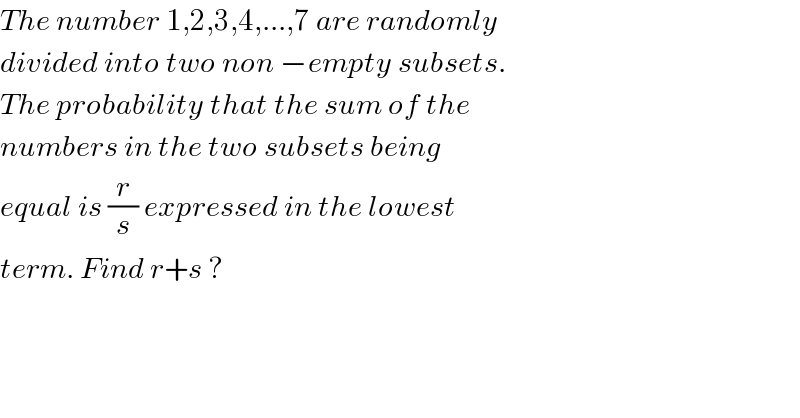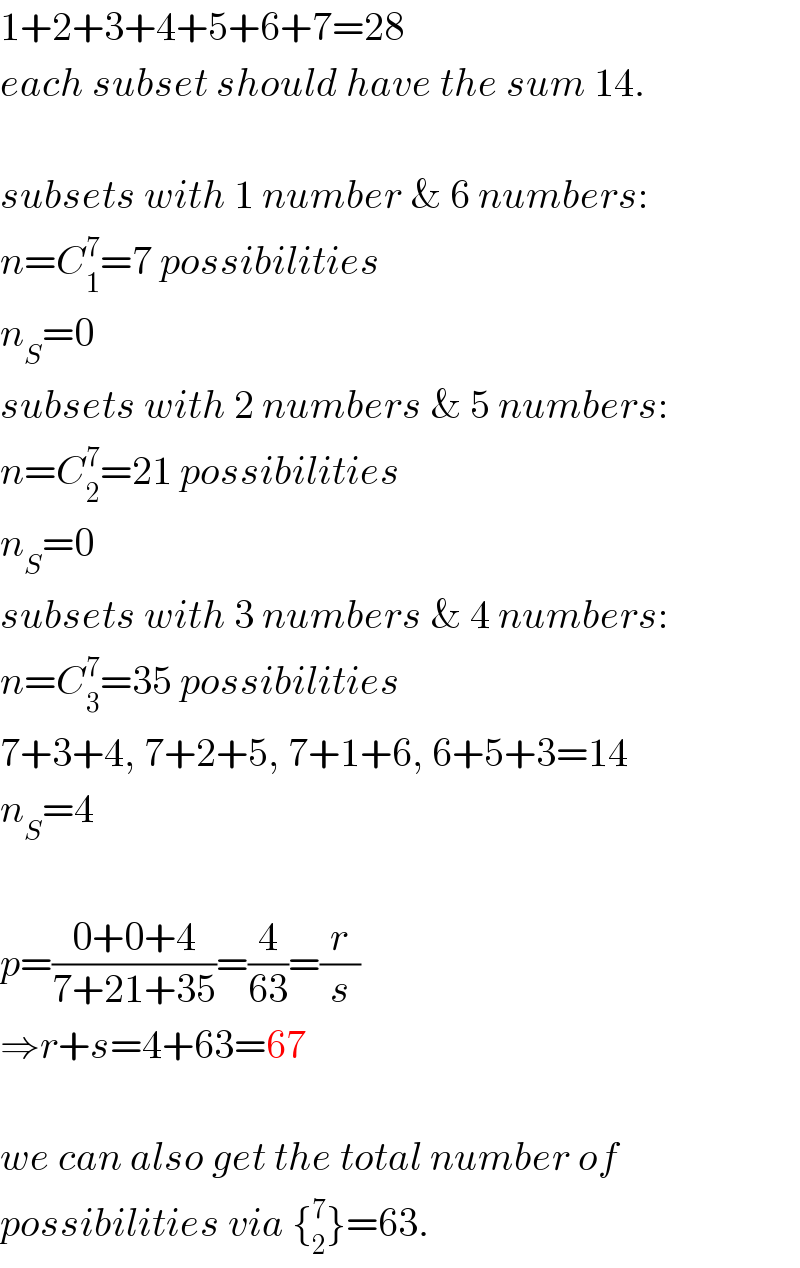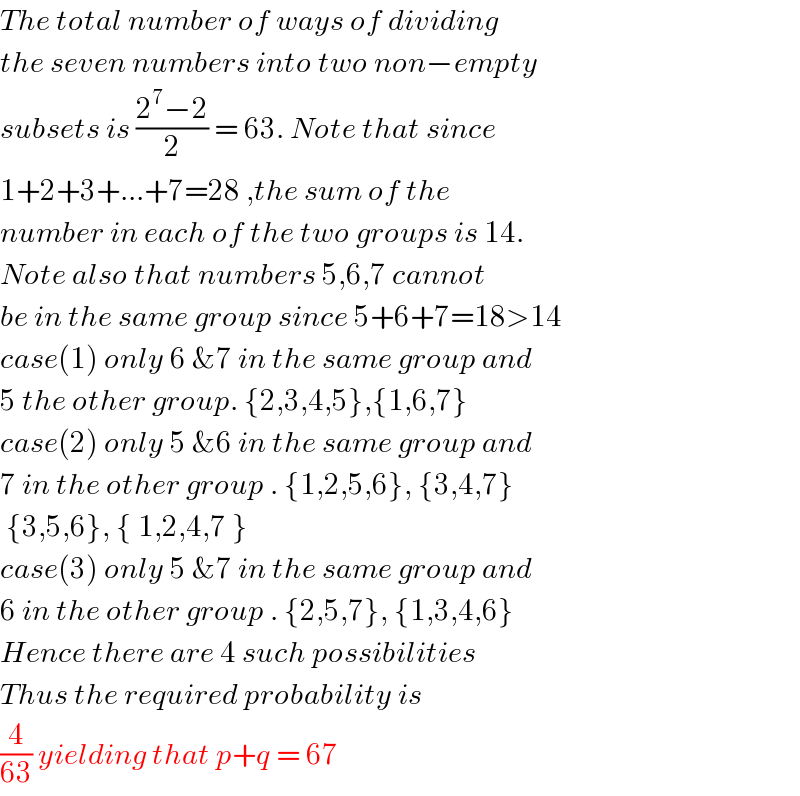
Question and Answers Forum
Previous in Permutation and Combination Next in Permutation and Combination
Question Number 116397 by john santu last updated on 03/Oct/20

Answered by mr W last updated on 03/Oct/20

Commented by john santu last updated on 04/Oct/20

Answered by john santu last updated on 04/Oct/20

